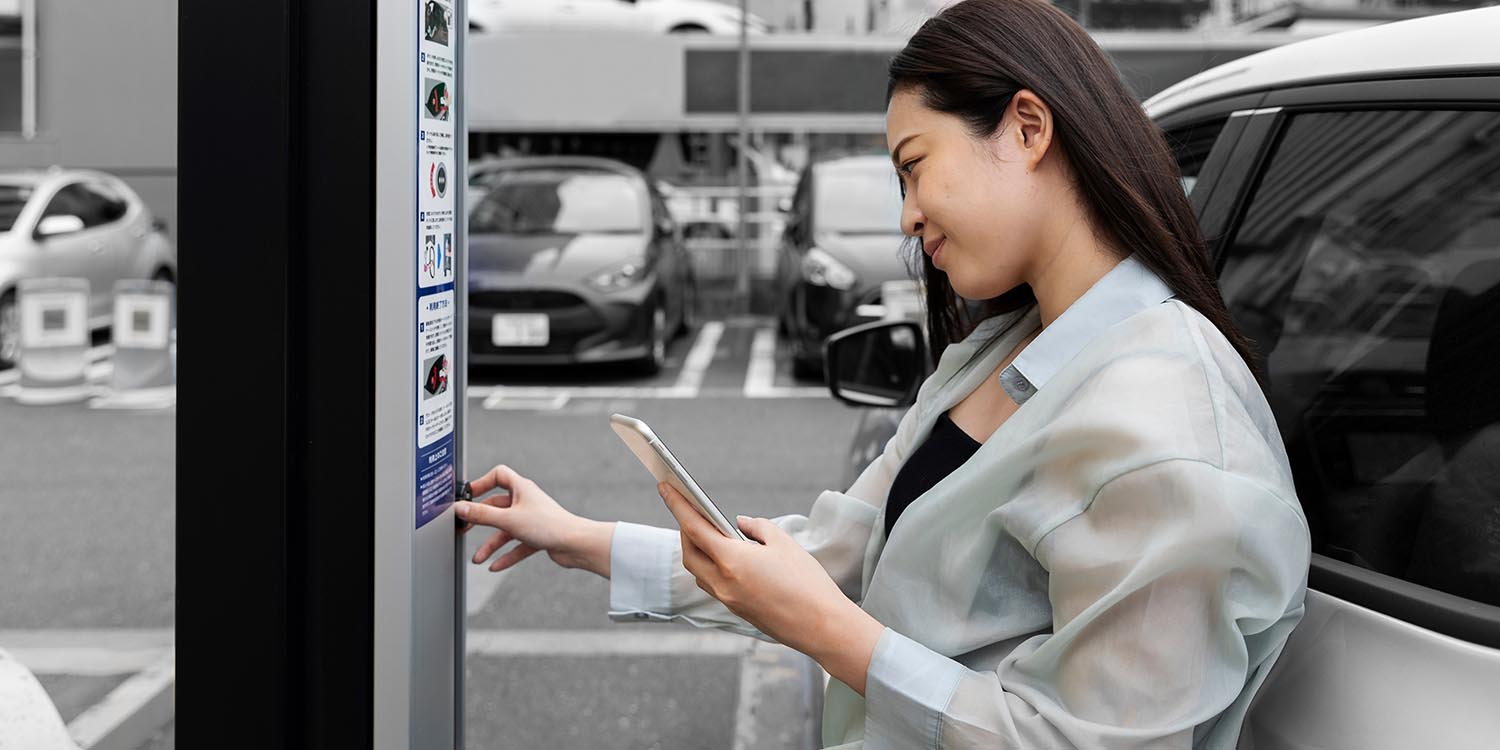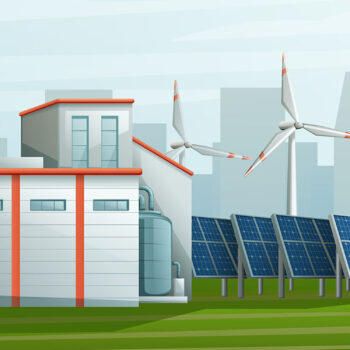India is placing electric vehicles (EVs) at the core of its Net-Zero 2070 strategy. With focused policies, market segmentation, and support for infrastructure, the EV sector is poised for rapid growth. The paper identifies challenges around cost, policy, and production—especially in commercial and agricultural segments—and proposes targeted interventions. A harmonized policy approach, financial incentives, and local R&D are key to accelerating EV adoption and building a robust, sustainable mobility ecosystem.
The 2024 Union Budget of India highlights the electric vehicle (EV) sector as a central component of the country’s sustainable development agenda. Key measures include plans to support EV manufacturing, expand charging infrastructure, and emphasize the electrification of public transport. These initiatives align with India’s broader goal of achieving net-zero emissions by 2070. Finance Minister Nirmala Sitharaman announced a substantial ₹1 lakh crore fund to support R&D in emerging sectors, including EVs, aimed at stimulating innovation and attracting private sector investment through long-term, low-interest loans.
Nitin Gadkari, Minister for Road Transport and Highways, outlined a transformative vision for India’s electric mobility future. He targets 30% EV penetration in private car sales by 2030, with higher targets for commercial vehicles and two- and three-wheelers. Gadkari also emphasized the need for an extensive EV charging network along national highways and introduced the concept of electric highways for long-haul trucks and buses. His vision extends beyond individual vehicles to an overarching shift in transportation infrastructure, emphasizing sustainability, efficiency, and alignment with environmental goals. This approach is expected to drive substantial growth in India’s EV sector, advancing the country’s goal of achieving a 100% EV market in the coming decades.
In this paper we will first dissect the Indian automobile market, focusing on its segmentation and the associated viability gaps basis of which we will try to assess EV applicability for the segments. Next, we’ll delve into the challenges, particularly in terms of cost of production and governance issues. Finally, some relevant questions are discussed briefly with our thoughts on the future of EV landscape.

Figure 1: Key module and area of discussion
Market segmentation and viability gap assessment:
To understand the complexities of the Indian automobile market and how electric vehicles (EVs) can play a transformative role, we need to categorize the market based on product types and their applications, avg. fuel consumption, and some other crucial parameters. By doing so, we can identify the viability gaps that each segment is associated with.

Table 1: Segmentation of Indian automobile market

Legend 1
Incentivization to encourage EV adoption would be meaningful for those segments which covers a very high annual distance (logically would be on top of the list in terms of fuel consumption and emission), lagging in terms of EV tech availability (and hence continuing with the existing petrol/ diesel/ hybrid models), and most importantly provides a larger public benefit (and not just limited to private usage).
As per the brief assessment, Commercial space is the major area with considerably high viability gap, along with other segments such as Cab (passenger vehicle, used commercially).
Understanding the segments with potential of EV applicability:
As electric vehicle (EV) technology becomes increasingly accessible, it is essential to prioritize sectors that offer the greatest potential for public benefit, emissions reduction, and cost-efficiency – and adopt EV especially where public usage and environmental savings are highest. By targeting these high-impact sectors, governments and the businesses can achieve faster returns on investment and accelerate the shift to a more sustainable future.
Focusing on critical vehicle segments presents a valuable opportunity to drive EV adoption in India. These segments, which have high public usage and substantial emissions reduction potential, align well with India’s sustainability goals. However, EV adoption must also be economically viable for end-users, as high Total Cost of Ownership (TCO) can create a barrier. Government intervention may be necessary to address high TCO and promote adoption in these areas.

Table 2: Vehicle segments with potential of EV applicability
Adopting electric vehicles (EVs) in India’s agriculture sector, despite a Total Cost of Ownership (TCO) estimated to be 1.4x to 1.6x higher than traditional vehicles, is crucial for long-term sustainability. EVs, particularly electric tractors, offer significant savings on fuel and maintenance, which can offset the higher initial costs over time. Additionally, electric farm vehicles reduce emissions and noise pollution, benefiting both the environment and the health of rural communities. As battery technology improves and production scales up, TCO gap will become narrow, making EVs a more cost-effective and eco-friendly option for Indian farmers in the near future – and hence, this segment has been added in the table above.
Issues related to Cost of Production (CoP):
The high cost of production remains a significant barrier to EV adoption in India. Factors like expensive battery technology and the need for advanced materials and components often lead to higher prices for consumers. Understanding the production cost challenges across different segments is crucial to making EVs more economically viable.

Table 3: Vehicle segments and cost of production related issues
Issues related to Governance/Policy:
The effectiveness of EV adoption in transforming India’s automobile sector is deeply linked to governance and policy. Key issues such as regulatory frameworks, infrastructure development, and government incentives significantly impact EV adoption. Examining these governance-related challenges reveals gaps in current policies and highlights areas where effective governance could enable EV adoption. The table below consolidates these issues by vehicle segment.

Table 4: Vehicle segments and governance issues
Key questions to ponder:
The existing gap in the government’s policies and the high cost of production for electric vehicles in the commercial and agricultural sectors are closely intertwined, presenting significant challenges to widespread EV adoption. Addressing these areas in tandem, are crucial for creating a sustainable and scalable EV ecosystem. The following critical questions aim to explore solutions that can bridge these gaps, reduce production costs, and accelerate the transition to electric mobility across key industries.

Table 5: Key Questions
Our thoughts – Future of the EV Governance Landscape:
In line with India’s vision for net-zero emissions by 2070, the government has introduced multiple schemes and policies to promote e-mobility and reduce fossil fuel reliance.
For Light Commercial Vehicles (LCVs), the Indian government introduced the Production-Linked Incentive (PLI) Scheme for Advanced Chemistry Cell (ACC) Battery Storage to boost domestic battery manufacturing, although some phases of this scheme have concluded. On the buyer side, the FAME India Scheme Phase II, which has largely been implemented, focused on supporting the electrification of public and shared transportation, indirectly benefiting LCVs by subsidizing vehicle costs and infrastructure. For Heavy Commercial Vehicles (HCVs), the government, through reports like NITI Aayog’s “Transforming Trucking in India,” emphasized the need for coordinated actions between the private and public sectors to scale up zero-emission trucking and expand charging infrastructure. Direct incentives for buyers were limited, with support primarily provided indirectly through initiatives like the Auto PLI Scheme, which is no longer ongoing, and the PM-eBus Sewa Scheme, which continues to facilitate the electrification of public fleets but not specifically HCVs
For Agricultural Vehicles, the Indian government’s policies for electrification are still in a nascent stage compared to those for other vehicle segments. The Kisan Urja Suraksha Evam Utthan Mahabhiyan (PM-KUSUM) scheme, while primarily focused on promoting the use of solar energy in agricultural operations, such as for irrigation pumps, indirectly supports the reduction of diesel reliance in the sector. However, direct government incentives for the electrification of tractors and other agricultural vehicles remain limited.
To accelerate EV adoption in key vehicle segments such as Light Commercial Vehicles (LCVs), Heavy Commercial Vehicles (HCVs), and agri-vehicles, a combination of enhanced financial and infrastructure incentives is crucial- on the supply side as well as the buyer side.

Table 6: Suggested government interventions
Conclusion
India stands at a transformative moment in its journey towards electrification in the automobile sector. The challenges and opportunities across vehicle segments reveal a complex interplay of governance, production costs, and infrastructure gaps. Addressing these requires a nuanced approach that leverages India’s strengths while learning from global best practices.
The governance and policy framework in India, though supported by schemes like FAME II, remains inconsistent across states, creating fragmentation in the EV market. Harmonizing these policies at a national level could significantly boost adoption by reducing regulatory barriers and fostering a unified market. Similarly, policies on import duties and incentivization can address high production costs, encouraging domestic manufacturers to scale operations and achieve economies of scale.
The production cost challenges, particularly in batteries and advanced EV components, underscore the importance of investing in local R&D and creating a robust manufacturing ecosystem. China’s dominance in EVs, driven by government-backed subsidies and a strong local supply chain, provides a blueprint for India. Targeted support for battery production and fostering collaboration between government and private sectors could significantly reduce costs while boosting innovation.
India’s strength in the two-wheeler market, as one of the largest adopters globally, is a positive indicator of its potential. However, the gaps in rural penetration, awareness, and infrastructure need immediate attention. Expanding the charging network through public-private partnerships, as demonstrated by California, can provide a scalable solution. Similarly, agricultural EV adoption, though nascent, presents immense promise. Electric tractors and farm equipment can deliver long-term savings and environmental benefits, despite their current higher TCO. Strategic subsidies and awareness campaigns targeted at rural areas could catalyse demand in this sector. Moreover, India must take inspiration from Norway’s comprehensive consumer-centric incentives and Germany’s R&D investments to bridge gaps in its EV ecosystem. A strong focus on research in battery technology, coupled with a consistent nationwide push for EV adoption, will position India as a global competitor in this space.
In summary, India’s path to EV leadership requires harmonizing policies, scaling local production, and investing in infrastructure and innovation. By adopting lessons from global EV leaders and tailoring them to local needs, India can overcome its challenges and unlock the full potential of electric vehicles across all sectors. A strategic and sustained effort will not only accelerate India’s transition to sustainable mobility but also establish it as a key player in the global EV market, driving economic growth and environmental stewardship.









